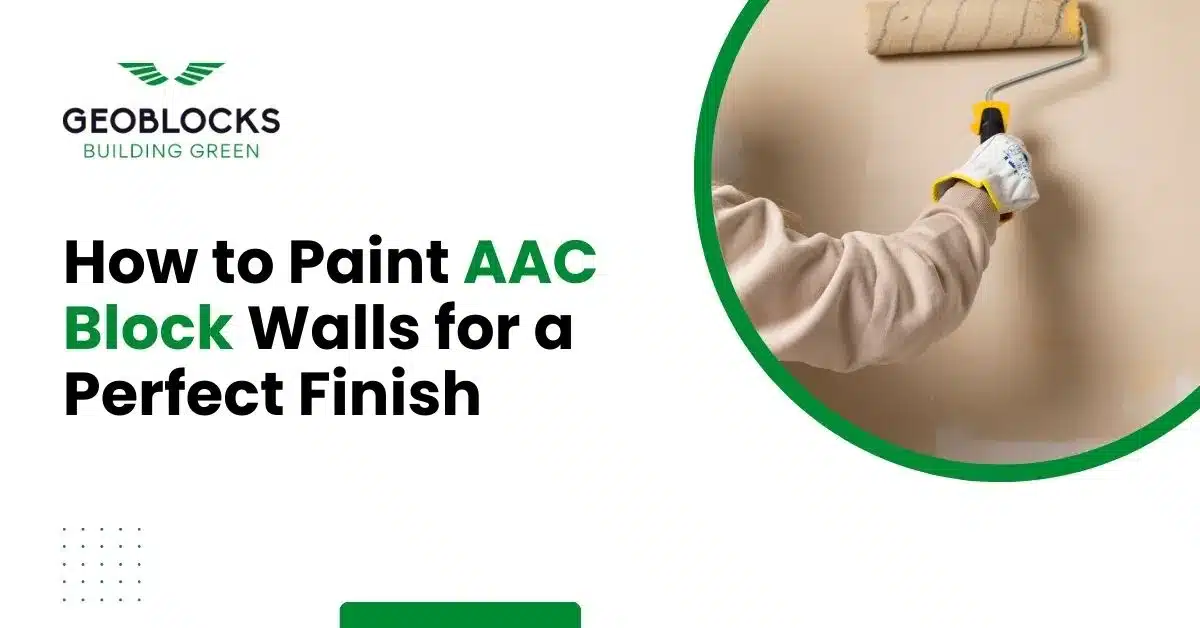Installing AAC blocks the right way is crucial for long-lasting, energy-efficient, and eco-friendly construction. Whether…

AAC (Autoclaved Aerated Concrete) blocks are widely recognized for their lightweight, energy-efficient, and durable qualities. However, painting these walls requires specific preparation and techniques to ensure a smooth and flawless finish. This guide outlines the steps and tips you need to paint AAC block walls effectively.
Prepare the Surface
Proper surface preparation is crucial for a seamless paint job.
- Clean the Surface: Remove dirt, dust, and loose particles using a brush or vacuum.
- Repair Cracks and Gaps: Fill any cracks or imperfections with a high-quality filler or AAC-compatible putty.
- Smoothen the Surface: Sand the surface lightly to ensure it is even and ready for painting.
Apply a Primer
AAC blocks are porous and can absorb paint unevenly.
- Use a high-quality primer designed for porous surfaces to seal the blocks.
- Apply one to two coats of primer, allowing sufficient drying time between coats.
Choose the Right Paint
Selecting the appropriate paint ensures durability and aesthetics.
- For interior walls, use acrylic emulsion paint for a smooth finish.
- For exterior walls, opt for weatherproof or waterproof paints to protect against moisture and environmental elements.
Apply the Paint
Follow these steps for the best results:
- First Coat: Use a roller or sprayer for even application. Start with a thin coat and let it dry completely.
- Second Coat: Apply a second coat to enhance the colour and finish.
- Touch-Ups: Inspect the walls for missed spots and touch them up for consistency.
Need premium AAC blocks or expert advice for your next project? Contact GEOBLOCKS now and build with confidence!
Finishing Touches
To ensure a professional-grade finish:
- Use a fine brush for edges and corners.
- Add a topcoat or sealant for added protection and longevity, especially for exterior walls.
Tips for a Flawless Finish
- Work in a Dust-Free Environment: Dust can settle on wet paint and ruin the finish.
- Avoid Overloading the Roller: Excess paint can cause drips and uneven coverage.
- Allow Adequate Drying Time: Ensure each coat is completely dry before applying the next.
- Use High-Quality Tools: Brushes, rollers, and sprayers of good quality make a noticeable difference in the outcome.
Frequently Asked Questions
What is the best way to paint a block wall?
Clean the surface, apply a primer for better adhesion, and use acrylic or weatherproof paint for a smooth, durable finish.
Which plaster is best for AAC blocks?
Lightweight ready-mix plaster or cement-based plaster with polymer additives is ideal for AAC blocks, ensuring strong bonding and smooth application.
What is the best paint for block walls?
For interiors, acrylic emulsion paint works best, while for exteriors, weatherproof or waterproof paints provide superior protection.
Conclusion
Painting AAC block walls doesn’t have to be a daunting task. With proper preparation, the right materials, and attention to detail, you can achieve a flawless and long-lasting finish. Whether it’s a DIY project or professional work, these steps ensure that your AAC block walls look stunning and are well-protected.
Transform your walls with ease and enjoy the perfect blend of aesthetics and functionality! For premium AAC blocks and expert advice, contact GEOBLOCKS today.




